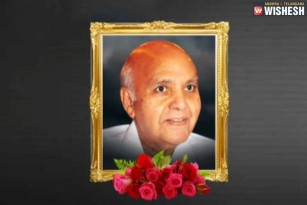
1. Define Stress: The body’s response to demands placed on it. This is how Hans Selye, the Canadian Scientist who coined the term stress, defined it. English was not his native  language and he confided to Dr. Paul Rosch of The American Institute of Stress years later that he would have chosen the word “strain” if he had known the language better. Other definitions include: A mismatch between the capabilities of the employee and the demands of the job or more simply put: a mismatch between the person and his or her environment. Also known as a poor P-E fit.
language and he confided to Dr. Paul Rosch of The American Institute of Stress years later that he would have chosen the word “strain” if he had known the language better. Other definitions include: A mismatch between the capabilities of the employee and the demands of the job or more simply put: a mismatch between the person and his or her environment. Also known as a poor P-E fit.
2. Make a list of participant’s stress at work. It’s a great icebreaker, it helps you get to know your audience and you can fill just about as much time as you like with this line of questioning.
3. Ask your audience this question: Is there anything on this list that someone is not bothered by? It starts the ball rolling on the concept that stress is really an interpretation of an event and not the event itself. Perception is not reality. A+B=C (see below).
4. Do the Hokie Pokie or make people do something that’s harmless but slightly embarrassing or simply pick someone from the audience to come up and assist you. Let people squirm in their seats while you decide. I do this to introduce the idea of negative self-talk. If you ask a group of men to do the Hokie Pokie, they’ll have a powerful first hand experience of negative self-talk.
5. Introduce Negative Self-talk. Most people aren’t aware of the power that their self-talk has over them. All those who refused to do the Hokie Pokie will be able to vividly recall their self-talk and see how it works first-hand, inhibiting them from doing even the simplest things.
6. Introduce the A+B=C concept. In a nutshell, A is the stressful event. B is your thoughts and beliefs about that event. And C is the stress that is brought on by the combination of A+B. Most people think that A=C. They never realize that their thoughts and beliefs play ANY role in their experience of stress. They also fail to realize that they can learn to change their thinking at B and thus greatly reduce their stress. To get a better handle on this read our trifold brochure Practical Stress Management or simply read the online article entitled Cognitive Restructuring.
7. (Optional) Show movie: Short Circuiting Stress. A real crowd pleaser and it thoroughly illustrates the A+B=C concept.
8. Demonstrate D: How to Dispute irrational thoughts. This is how it works: When you start a task and say to yourself, I’ll never get through all this. It will take forever. Learn to talk back to your overly negative thoughts. (Try using The Thinking Person’s Guide to Managing Stress as a workbook if you want to expand on this or give people a takeaway. You can also use The ABC’s of Cognitive Restructuring if you want a prepackaged seminar along with PowerPoint slides.
9. Demonstrate deep breathing. Hold your hand over your belly. Watch it rise as you breath into a count of five 1-2-3-4-5 and breathe out to a count of five 1-2-3-4-5. When you get so stressed that you can’t think clearly, a simple breathing technique like this will help you get your perspective back.
10. Play a meditation tape (Try playing the meditation segment from Relaxing Through The Seasons.
11. Handout: The Stress Profiler A self-scoring stress assessment tool. You can give them time to take this as part of your program. (It takes about twenty minutes.) Or give this out as a take-away. Can be purchased in lots of 100 for $2.50 each.
12. Review. Review what you’ve covered.

























